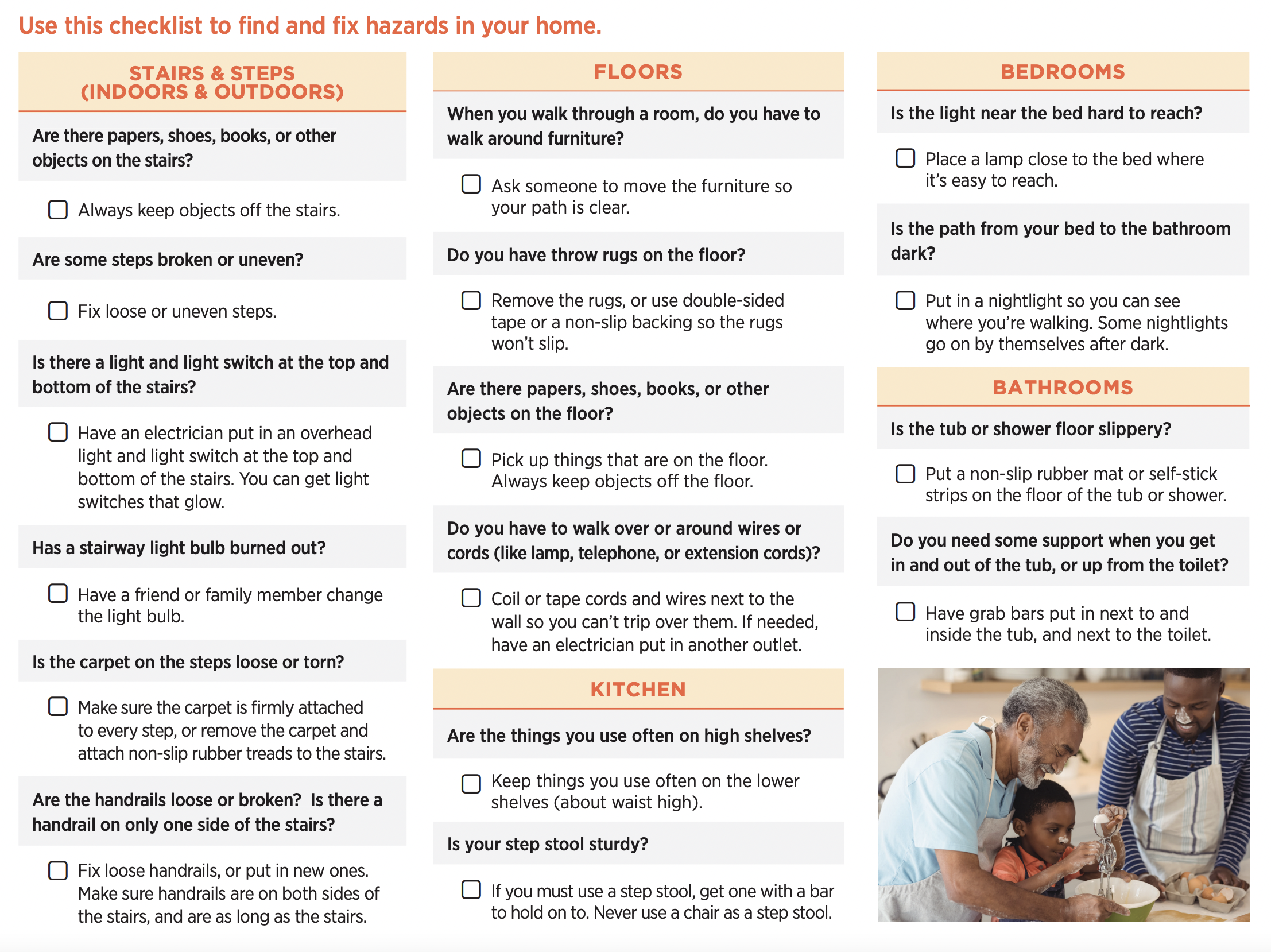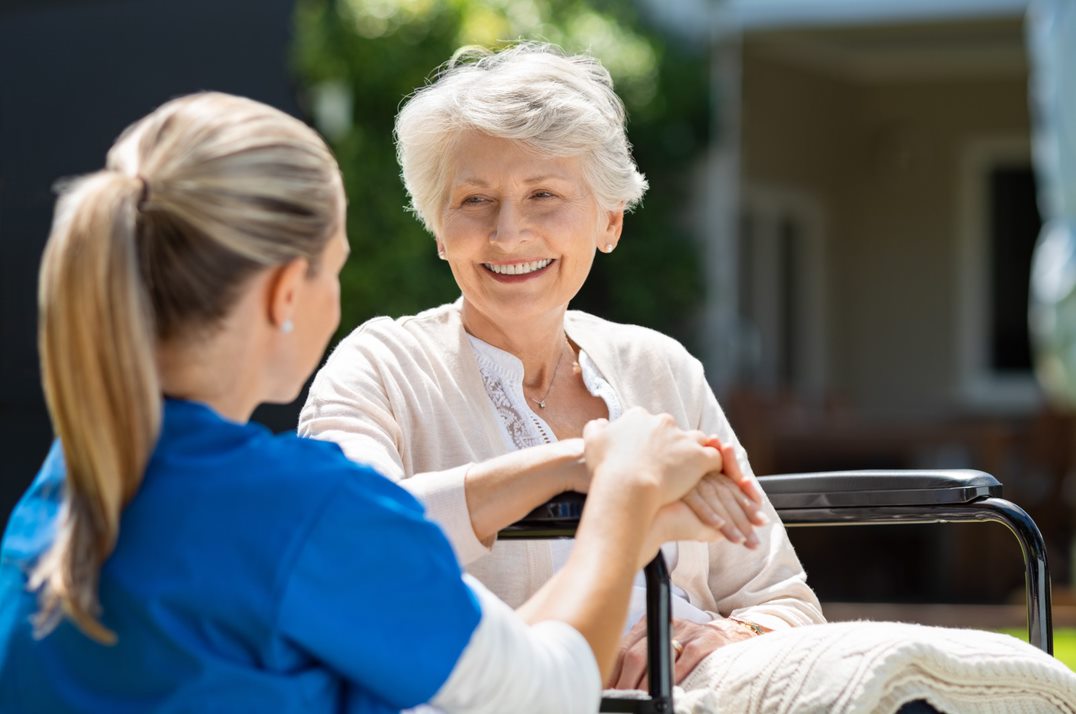The 8-Minute Rule for Dementia Fall Risk
Some Known Factual Statements About Dementia Fall Risk
Table of ContentsDementia Fall Risk for DummiesThe Best Guide To Dementia Fall RiskHow Dementia Fall Risk can Save You Time, Stress, and Money.The 7-Minute Rule for Dementia Fall Risk
An autumn risk evaluation checks to see just how most likely it is that you will certainly fall. The analysis usually consists of: This includes a series of inquiries concerning your total health and wellness and if you've had previous drops or problems with balance, standing, and/or strolling.STEADI consists of testing, assessing, and intervention. Interventions are suggestions that may minimize your threat of dropping. STEADI consists of 3 steps: you for your risk of succumbing to your risk aspects that can be enhanced to attempt to stop falls (as an example, balance issues, damaged vision) to lower your threat of falling by using effective methods (as an example, giving education and learning and resources), you may be asked several concerns including: Have you dropped in the past year? Do you feel unsteady when standing or strolling? Are you bothered with dropping?, your service provider will examine your strength, equilibrium, and gait, using the complying with loss assessment devices: This test checks your gait.
If it takes you 12 seconds or even more, it might indicate you are at higher threat for an autumn. This examination checks strength and equilibrium.
Relocate one foot halfway ahead, so the instep is touching the big toe of your various other foot. Move one foot totally in front of the various other, so the toes are touching the heel of your various other foot.
Some Known Questions About Dementia Fall Risk.
Many falls happen as a result of multiple contributing aspects; as a result, taking care of the threat of dropping starts with recognizing the elements that add to fall risk - Dementia Fall Risk. Several of the most relevant risk aspects consist of: History of prior fallsChronic clinical conditionsAcute illnessImpaired gait and balance, lower extremity weaknessCognitive impairmentChanges in visionCertain risky drugs and polypharmacyEnvironmental factors can also increase the threat for drops, consisting of: Insufficient lightingUneven or damaged flooringWet or unsafe floorsMissing or harmed handrails and grab barsDamaged or incorrectly equipped equipment, such as beds, mobility devices, or walkersImproper use assistive devicesInadequate guidance of individuals living in the NF, including those that exhibit aggressive behaviorsA successful loss danger management program needs a thorough professional evaluation, with input from all members of the interdisciplinary team
-copy-5.jpg)
The treatment plan need to additionally include interventions that are system-based, such as those that advertise a risk-free atmosphere (ideal illumination, hand rails, get bars, and so on). useful reference The efficiency of the interventions should be examined periodically, and the treatment plan changed as required to mirror modifications in the fall threat evaluation. Implementing a fall danger management system making use of evidence-based ideal practice can lower the prevalence of drops in the NF, while limiting the capacity for fall-related injuries.
What Does Dementia Fall Risk Mean?
The AGS/BGS standard suggests evaluating all adults matured 65 years and older for fall danger every year. This testing contains asking people whether they have fallen 2 or more times in the past year or sought clinical attention for an autumn, or, if they have actually not fallen, whether they really feel unsteady when walking.
Individuals that have dropped when without injury should have their equilibrium and gait reviewed; those with stride or equilibrium problems must obtain added assessment. A history of 1 fall without injury and without gait or equilibrium problems does not require further assessment past continued yearly loss danger screening. Dementia Fall Risk. A fall threat analysis is required as part of the Welcome to Medicare examination

What Does Dementia Fall Risk Do?
Documenting a falls history is one of the high quality indications for fall prevention and management. A crucial part of threat analysis is a medicine testimonial. A number of courses of medicines increase autumn risk try this out (Table 2). copyright drugs in specific are independent predictors of drops. These drugs tend to be sedating, change the sensorium, and harm balance and gait.
Postural hypotension can usually be minimized by reducing the dose of blood pressurelowering medicines and/or stopping medicines that have orthostatic hypotension as a negative effects. Usage of above-the-knee assistance pipe and sleeping with the head of the bed boosted might additionally decrease postural decreases in blood stress. The recommended aspects of a fall-focused checkup are shown in Box 1.

A Pull time greater than or equal to 12 seconds suggests high autumn risk. Being unable to stand up Bonuses from a chair of knee elevation without making use of one's arms suggests increased loss risk.